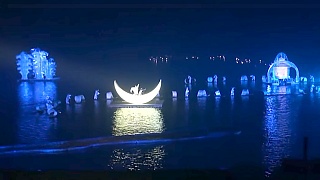
|
At root, narcissism ('life is all about me') is self-loathing projected onto someone else (the scapegoat, who might be driven to death - through illness, madness, suicide; let's call it what it is - emotional torture; in contrast, all others are shown a completely opposite, OTT, 'lovely' persona; and many will be deceived by this).
Narcissism is very destructive; and not often recognized.
This is not a rare thing; it could well be 1 in 5 people.
Don't miss this; Dr. Ramani is awesome.
Ramani Durvasula in conversation with Lewis Howes ...
Narcissistic fathers and the damage they do to their children ...
Narcissistic mothers and the damage they do to their children ...
Narcissism and society ...
On how a narcissist will try to destroy you ...
Is your depression a symptom of being in a narcissistic relationship?
Relationships need some work, including self-reflection; but they shouldn't be hard work - that's a sign it might never work out; if one feels a need to be treading on egg shells, that's confirmation it is doomed. Real relationships are based on mutual respect, flexibility and compassion (unconditional love - no ifs or buts)*; narcissists have none of these attributes.
In a time of stress, does the other stay positive and chip in, or start a blame game? Things like this are the signs to look out for. Does the other help you reach your dreams, or belittle you ? Are they present in the moment or in their own little bubble ? A narcissist can't stand your success or happiness.
Psychopathologies are all about distortions between reality and self, between inner self and behavior. When there is the absence of such distortions - masks, projections, defense mechanisms, etc., there is authenticity. That's going from acting, to really living.
* without needing that person, or allowing oneself to be walked upon. One must be at least somewhat authentic / love oneself first; not trying to complete oneself, etc.
|

 QinHuangDao 秦皇岛
QinHuangDao 秦皇岛





